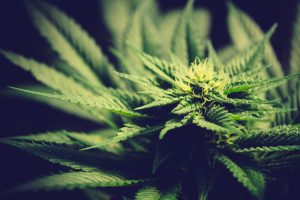Almost half of all traffic fatalities in Washington state involve at least one driver who was impaired due to alcohol and/or drugs.
This according to a 2018 report from the Washington Traffic Safety Commission, which also tabs impairment as the top contributing factor in fatal crashes in Washington and notes that most of those impaired drivers are affected not just by alcohol or drugs, but both.
The legalization of recreational marijuana in Washington state has had impacts on driving safety. Simply put, according to the WTSC, the increasingly widespread use of marijuana has made the situation worse.
Consider that in 2011 and 2012, the number of fatalities in the state in which an impaired driver was involved was at its lowest in the past decade. From a high of 315 in 2006, the number had dropped to 215 in 2011 and 216 in 2012, when recreational cannabis was legalized. By 2014, when the first recreational marijuana stores were opened in Washington, the number of fatalities had risen to 230. In 2016, the last year for which data is available, the number of deaths was up to 278.
Or consider that recent Insurance Institute for Highway Safety studies have shown an increase of crashes of up to 6 percent in states where marijuana is legal, compared to neighboring states that ban marijuana.
And here’s the kicker: More drivers than ever have multiple intoxicants in their systems, which according to research is more dangerous than having just one alone.

In 2012, poly-drug drivers (those affected by combinations of alcohol and drugs) became, for the first time, the most prevalent type of impaired drivers involved in fatal crashes. And since then, poly-drug drivers involved in fatal crashes have increased an average of 15 percent every year, according to the WTSC report.
Unsurprisingly, the most common substance in poly-drug drivers is alcohol, followed by THC, the chemical in marijuana behind most of its psychological effects. The most common poly-drug combination is alcohol and THC.
In other words: If before marijuana was legalized most impaired drivers only had alcohol in their systems, since then most impaired drivers are affected by a cocktail of both alcohol and marijuana.
The research doesn’t outright prove anything, but the evidence does point to alcohol and marijuana together being riskier than just one alone. According to the WTSC, “giving alcohol to drivers who are already compromised by THC will only further inflate the level of that risk.” Based on research cited in the report, drivers with both THC and alcohol in their systems are much more likely to be involved in a crash than drivers with alcohol alone.
How does this affect your business? For starters, especially if you’re in a safety-sensitive industry, you may want to consider a workplace policy on marijuana. It is not a harmless drug, after all, and more and more workplaces are factoring that in to their policy decisions. For assistance in this, please feel free to reach out to Bostec; we have decades of experience navigating all manners of workplace drug and alcohol policies.

